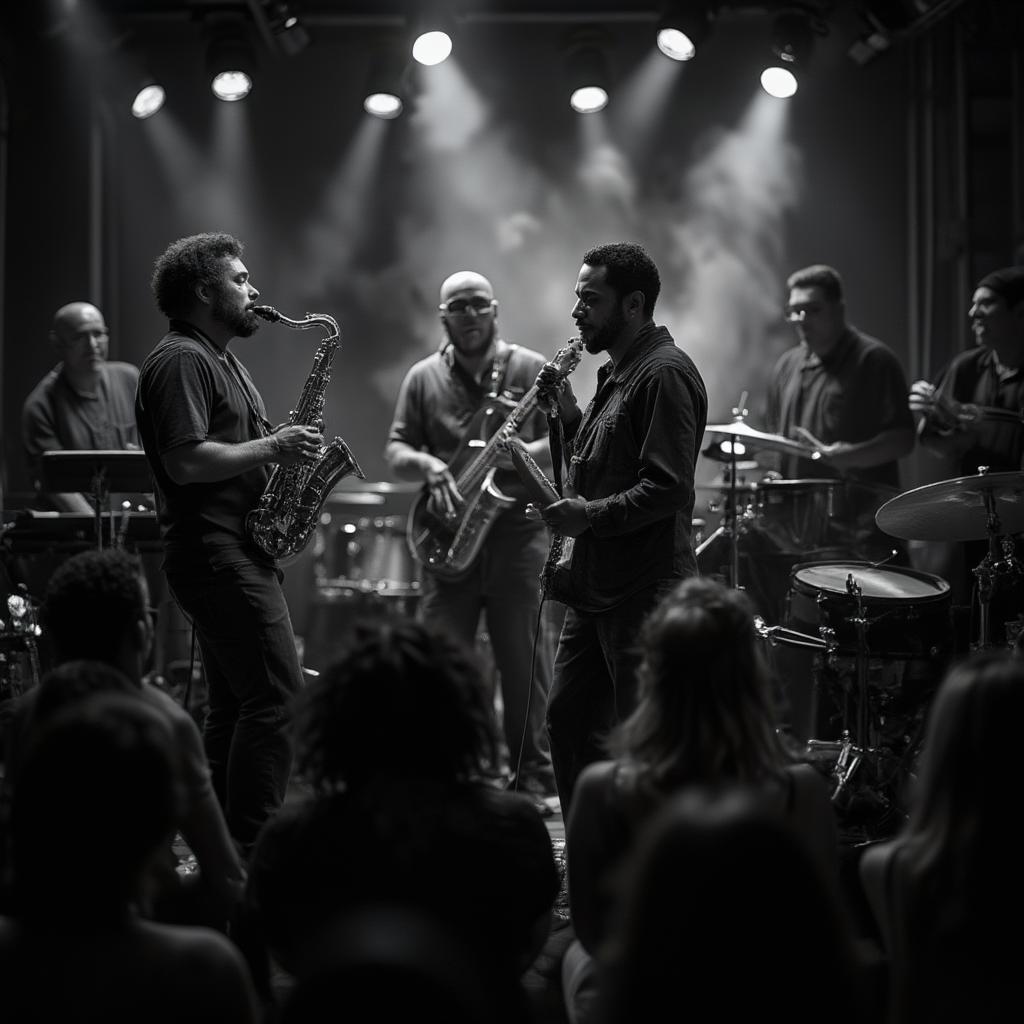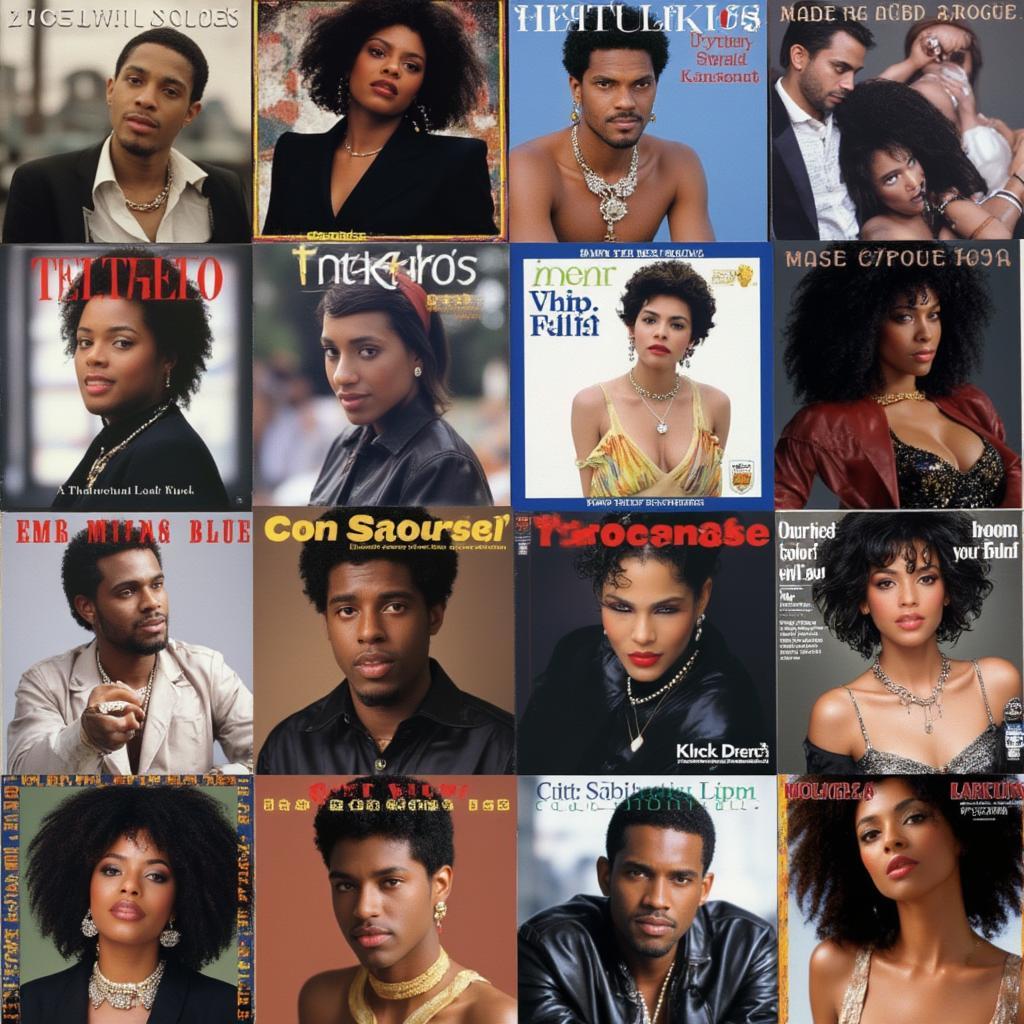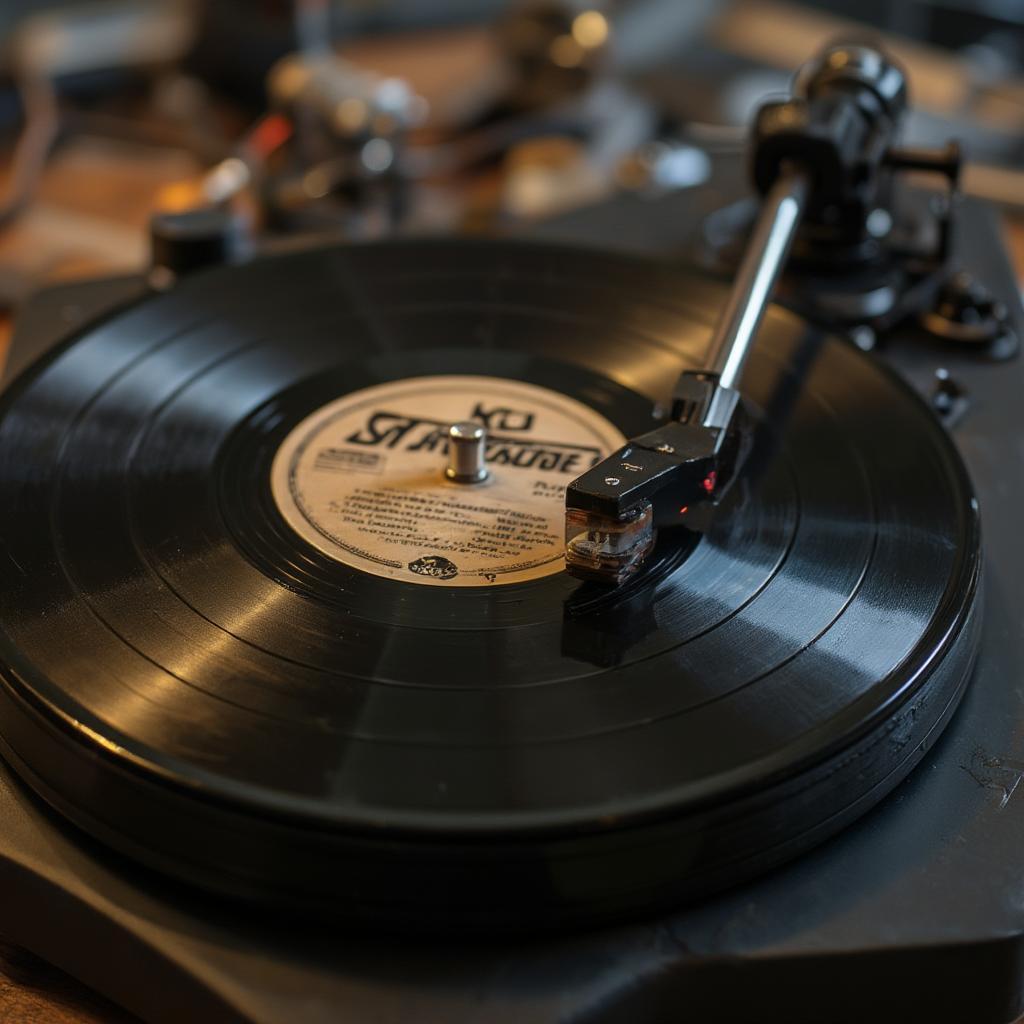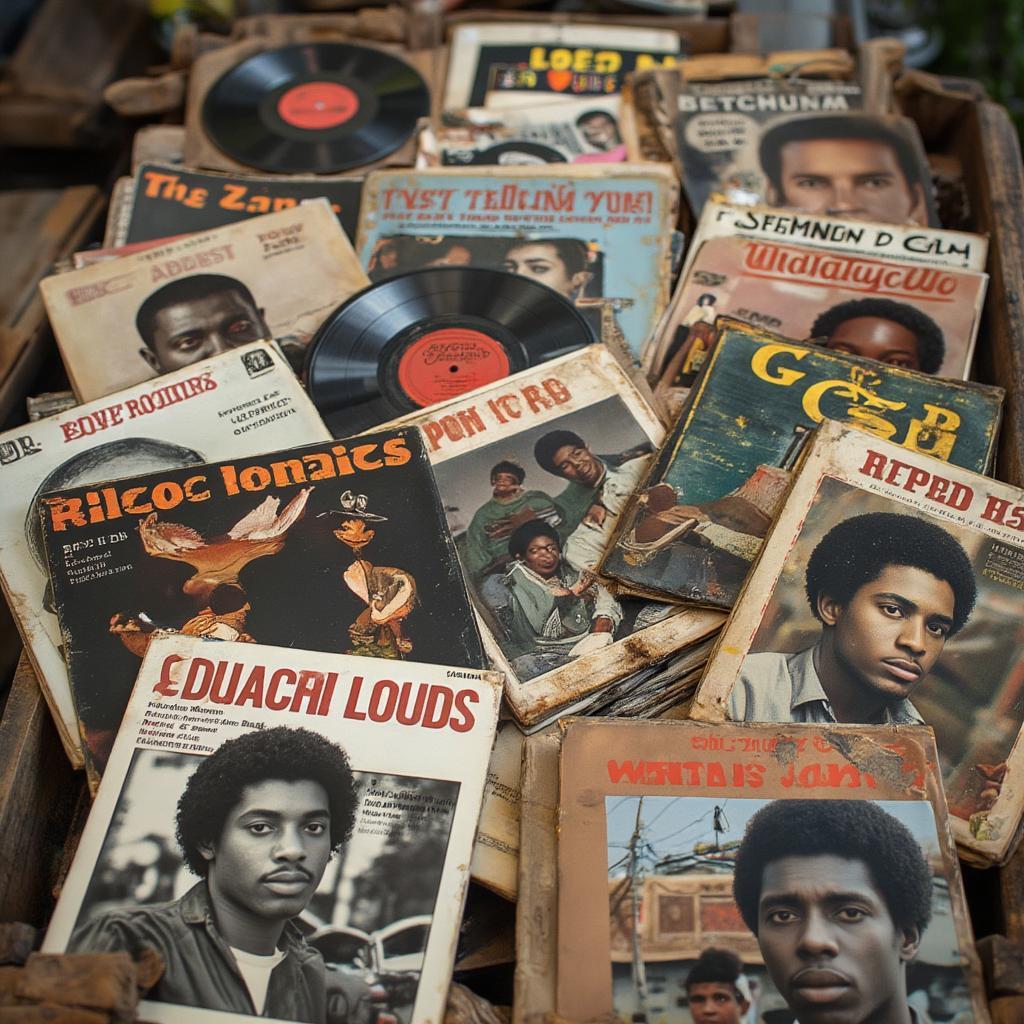The Deep Roots: A Journey Through the History of R&B

The story begins long before the term “R&B” was ever coined, emerging from the heart of African American communities. Early 20th-century blues and gospel music created fertile ground for something new, a sound that blended the sacred and the secular, the joyful and the sorrowful. These genres, rich in storytelling and improvisation, laid the foundation for what would become R&B. The Great Migration saw African Americans move from the rural South to the urban North, bringing their music with them. In cities like Chicago, Detroit, and New York, a vibrant scene emerged, powered by this influx of talent and culture. The music began to electrify and amplify, mirroring the energy of these burgeoning urban centers.
The Birth of Rhythm and Blues
The term “rhythm and blues” was introduced by Billboard magazine in the late 1940s as a marketing category. In the pre-R&B era, this music was often categorized as “race music,” a term that was frankly, deeply racist and limiting. The switch to R&B was more than just a name change; it reflected the evolving sound, a fusion of blues, gospel, and jazz with a new, infectious rhythmic drive. This was the music of a generation finding its voice, expressing its joys, pains, and ambitions. The sound was distinctly danceable, driving listeners to the dance floor. This is where artists like Louis Jordan and his Tympany Five made a name for themselves, their jump blues sound blending jazz and blues in a uniquely energetic way. Early R&B wasn’t just for dance halls; it was also a soundtrack to life in a rapidly changing America.

The 1950s: A Decade of Transformation
The 1950s were a crucial era for R&B. It was during this decade that the genre began to solidify its defining characteristics. A blend of gospel vocals, the driving beat of the drums, the twang of the electric guitar, and the punch of the horns defined this new sound. It was a time when R&B was transitioning from its regional, more localized roots to finding a wider, national audience. Key figures emerged such as Chuck Berry, with his infectious guitar riffs and energetic stage presence. He wasn’t just a musician; he was a storyteller who understood the struggles and joys of the youth culture of the time. Little Richard was a force of nature, his flamboyant style and vocal acrobatics forever changing the landscape of popular music. Fats Domino, with his rolling piano style and smooth vocals, brought a New Orleans flavor to the R&B scene, and made it incredibly popular with the younger generation. These artists were not just making music; they were creating an experience, a feeling of freedom and rebellion. To understand how music from this period still resonates today, exploring the 1950s r&b landscape will shed some light on their cultural impact.
- Chuck Berry: Pioneer of rock and roll, known for his guitar riffs and storytelling.
- Little Richard: Flamboyant and high-energy performer, influential in the early days of rock and roll.
- Fats Domino: Known for his piano-driven sound and smooth, soulful voice.
- Ruth Brown: A powerful vocalist who earned the nickname “Queen of R&B.”
- Ray Charles: Brought a unique blend of gospel, blues, and soul, pushing the boundaries of genre.
“The 1950s were a period of incredible innovation and experimentation in R&B. It was when we really saw artists pushing the boundaries of what music could be, both musically and culturally,” says Dr. Eleanor Vance, a musicologist at the Institute of Popular Culture.
This era was more than just a sound; it was a social phenomenon, a cultural revolution. R&B in the 1950s paved the way for the rise of rock and roll, demonstrating how musical genres interact, blend, and evolve, shaping culture along the way.
The Evolution of Soul
In the 1960s, R&B underwent another significant transformation, giving birth to soul music. Soul took the emotional intensity of gospel and merged it with the rhythms and instrumentation of R&B. This new genre was raw, powerful, and deeply personal, reflecting the social and political climate of the time. Artists like Sam Cooke, Aretha Franklin, and Otis Redding became icons of this era. They weren’t just singers; they were storytellers, pouring their hearts and souls into every performance. Their music wasn’t just entertainment; it was a form of protest, a statement of identity and pride. The sounds of Motown also played an important role in shaping the soul landscape. Labels like Stax Records, out of Memphis, were also instrumental in shaping the sound and feel of this period.
soul music icons on stage
Key characteristics of Soul:
- Gospel influence: Strong vocal performances with a heavy emphasis on emotion.
- Lyrics: Focused on personal experience, love, and social issues.
- Instrumentation: Utilized horns, organs, and a strong rhythm section.
- Social commentary: Music that often reflected the civil rights movement and cultural changes.
- Emotional Depth: Music that tapped into a deep well of feelings and experiences.
Sam Cooke’s velvety voice and socially conscious lyrics made him a symbol of the changing times. Aretha Franklin, the “Queen of Soul,” demonstrated unmatched vocal power and emotional depth, becoming an inspiration to generations of singers. Otis Redding’s soulful delivery and raw emotion captured the pain and joy of life. These artists weren’t just making music; they were channeling the hopes and dreams of a generation. These legends all played a role in shaping the legacy of soul music, and its influence on R&B that would follow.
From Funk to Contemporary R&B
The 1970s brought the funk revolution, with artists like James Brown and Parliament-Funkadelic pushing the boundaries of rhythm and groove. Funk emphasized syncopated rhythms, complex bass lines, and a heavy dose of improvisation. This era was all about getting down and grooving, and R&B had a new dynamic and a more experimental sound. The use of electric instruments such as synthesizers also helped to define the sonic palette. As the 80s and 90s rolled around, we saw the rise of what’s now referred to as contemporary R&B. This sub-genre started to blend the sounds of soul and funk with hip-hop influences. Synthesizers became more prominent, as did electronic drums, and this era gave us iconic artists such as Whitney Houston, Michael Jackson, and Prince. The music of this era became slicker and more polished, but the emotional core remained intact. The music video also became an important part of how people would engage with this type of music.
Evolution from 70’s onward:
- The rise of Funk: Syncopated rhythms and instrumental complexity.
- Synthesizers and Electronic drums became standard for production.
- Contemporary R&B: Blending of soul, funk, and hip-hop.
- New Jack Swing: a mix of R&B, hip-hop, and dance-pop.
- Video as an art form: The rise of music videos and artists became more visual.

The evolution of R&B continues, with modern artists such as Beyoncé, Rihanna, and The Weeknd carrying the torch, pushing the boundaries of the genre while honoring its rich history. It’s fascinating to see how these new artists embrace the history of this music, with their own modern twists. The echoes of the 90 hits r&b can be found in the music of today, showing its lasting impact.
“R&B is not just a genre; it’s a cultural phenomenon. It’s the soundtrack of our lives, reflecting the highs and lows, the joys and sorrows, of the human experience,” says James “Big Daddy” Johnson, a Grammy-winning R&B producer.
The Enduring Legacy
The history of R&B is not just about music; it’s about the African American experience, about the struggles, triumphs, and cultural contributions of a community. From its origins in blues and gospel to its modern incarnations, R&B has been a powerful force for social change, providing a voice for the voiceless and a platform for self-expression. It is a testament to the power of music to transcend boundaries and connect with us on a deeply human level. The enduring legacy of R&B is found in its influence on countless artists across genres and its ongoing ability to resonate with audiences all around the world.
R&B is a genre that continues to evolve, but it will never forget its roots. The story is a powerful reminder that music has the ability to change the world, one beat at a time, and it continues to have a profound effect on popular culture today.
Frequently Asked Questions About R&B
- What are the main characteristics of early R&B? Early R&B blended elements of blues, gospel, and jazz, with a focus on a danceable rhythm and soulful vocals. It often featured instruments like the saxophone, piano, and electric guitar.
- How did the term “Rhythm and Blues” originate? Billboard magazine coined the term “Rhythm and Blues” in the late 1940s to categorize music previously labeled as “race music.” This name change aimed to represent the genre’s evolving sound and appeal.
- Who are some of the most influential artists from the soul era? Some of the most influential artists from the soul era include Sam Cooke, Aretha Franklin, Otis Redding, and Marvin Gaye. These artists were known for their emotionally charged vocals and socially conscious lyrics.
- How did funk influence R&B? Funk brought syncopated rhythms, complex bass lines, and improvisation into the R&B mix. Artists like James Brown and Parliament-Funkadelic were influential in the development of this style.
- What is contemporary R&B? Contemporary R&B blends elements of soul, funk, and hip-hop, often using electronic instruments and synthesizers. Artists like Beyoncé, Rihanna, and The Weeknd are examples of modern artists.
- Why is R&B so important to music history? R&B has been a significant force in music, driving cultural and social change, offering a voice to marginalized groups, and having a huge impact on the creation of many other music genres.
- How has R&B influenced other genres of music? R&B has heavily influenced many genres, including rock and roll, pop, hip-hop, and many other forms of popular music, and its sounds can be heard in many different styles today.
- What were some of the major record labels that helped develop R&B? Labels such as Atlantic, Chess, Motown, Stax, and King Records all played an important role in developing and promoting the genre and helping artists to find their audiences.
- Where can I hear a wide variety of R&B music? You can hear a wide variety of R&B on most streaming services, classic hits radio stations, or on record compilations. The internet is full of resources to dig deeper and explore this rich musical landscape.
The history of R&B is a complex tapestry woven with threads of blues, gospel, soul, funk, and more. It’s a powerful testament to the resilience, creativity, and cultural richness of African American communities, and it’s a story that continues to be written with each new song and each new artist. From the early days of jump blues to the innovative sounds of contemporary R&B, the music has always been a reflection of the times, a voice for the voiceless, and a celebration of the human spirit.




